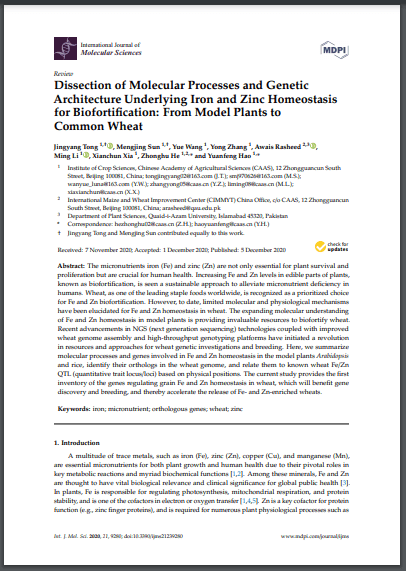The micronutrients iron (Fe) and zinc (Zn) are not only essential for plant survival and proliferation but are crucial for human health. Increasing Fe and Zn levels in edible parts of plants, known as biofortification, is seen a sustainable approach to alleviate micronutrient deficiency in humans. Wheat, as one of the leading staple foods worldwide, is recognized as a prioritized choice for Fe and Zn biofortification. However, to date, limited molecular and physiological mechanisms have been elucidated for Fe and Zn homeostasis in wheat. The expanding molecular understanding of Fe and Zn homeostasis in model plants is providing invaluable resources to biofortify wheat. Recent advancements in NGS (next generation sequencing) technologies coupled with improved wheat genome assembly and high-throughput genotyping platforms have initiated a revolution in resources and approaches for wheat genetic investigations and breeding. Here, we summarize molecular processes and genes involved in Fe and Zn homeostasis in the model plants Arabidopsis and rice, identify their orthologs in the wheat genome, and relate them to known wheat Fe/Zn QTL (quantitative trait locus/loci) based on physical positions. The current study provides the first inventory of the genes regulating grain Fe and Zn homeostasis in wheat, which will benefit gene discovery and breeding, and thereby accelerate the release of Fe- and Zn-enriched wheats.

